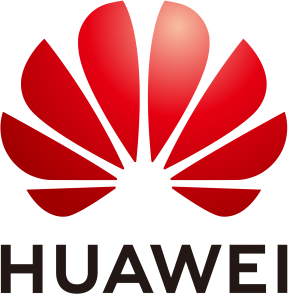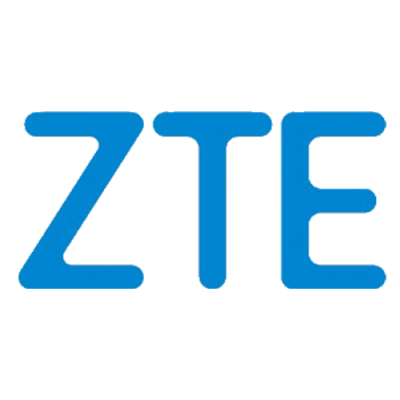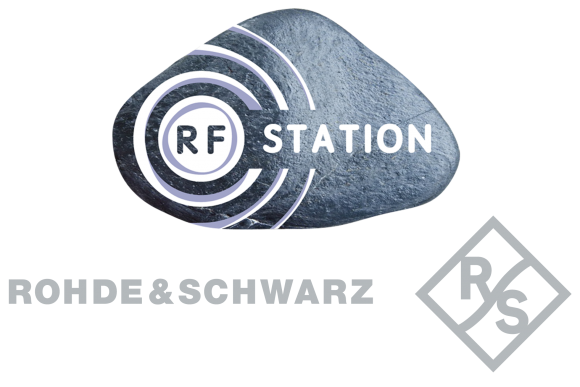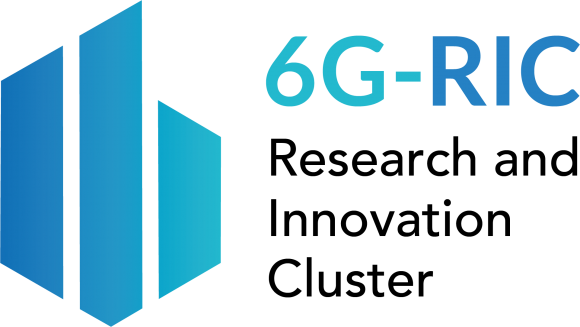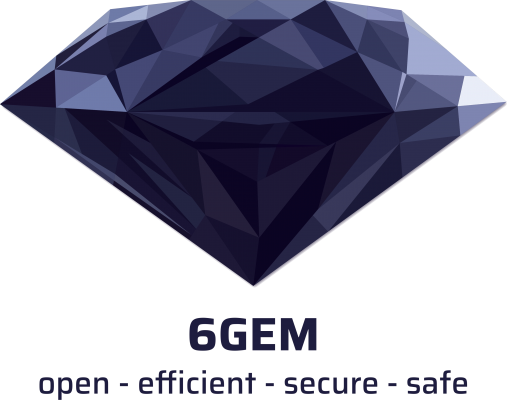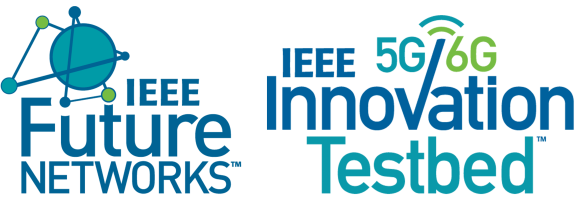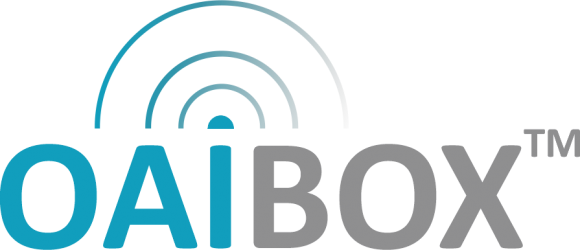- DEMO 1: A Digital Twin Channel Platform Enabled by Environment Sensing
- DEMO 2: Digital wellbeing Navigator: An innovative computational model for global digital wellbeing index.
- DEMO 3: Device-free Indoor Localization with RFID Technology
- DEMO 4: Providing 5G services via GEO satellite – A demonstration of 5G-NTN using OpenAirInterface5G
- DEMO 5: 6G Wireless system exploration with MATLAB
- DEMO 6: RF design and testing end-to-end wireless system with MATLAB
- DEMO 7: 6G Wireless Landscape
- DEMO 8: OAIBOX- open source 5G/6G test network
- DEMO 9: Accelerate R&D in 5G using NetSim
- DEMO 10: Towards 6G: The test & measurement perspective, 6G-life: Communication Strategies for Human-Machine Collaboration in Robotics and the Metaverse, 6G-RIC - Research and Innovation for Sustainable and Secure 6G Technologies
- DEMO 11: Open-Source 5G FR2 Test Network (FR2 OAI)
- DEMO 12: Reconfigurable Intelligent Surface for 6G
DEMO 1: A Digital Twin Channel Platform Enabled by Environment Sensing
TUESDAY, DEC 5, 14:00 - 14:45 / LOCATION: DEMO ROOM EXHIBITION HALL (GRAND BALLROOM)
Panelist: Jianhua Zhang, Beijing University of Posts and Telecommunications
Abstract:
First, the platform collects environment information in real time through sensing devices such as lidar and depth cameras, and then generates point cloud data. The location, size and other features of the scatterers can be extracted, allowing for automatic construction of the digital twin environment. Second, electromagnetic calculations are performed in the twin environment to predict radio propagation. Third, the channel characteristics of the time, frequency, and spatial domains are obtained through data processing, enabling the implementation of the digital twin channel. Finally, the twin environment and twin channel are visually presented to the user, providing information of base station coverage and received signal strength of user equipment in dynamic environment, which is expected to support intelligent online optimization of the future network. We will demonstrate the feasibility of the platform in both indoor and outdoor scenarios.
DEMO 2: Digital wellbeing Navigator: An innovative computational model for global digital wellbeing index.
TUESDAY, DEC 5, 14:45 - 15:30 / LOCATION: DEMO ROOM EXHIBITION HALL (GRAND BALLROOM)
Panelist: Mamunur Rashid, ITHRA, ARAMCO
Abstract:
Our Digital Wellbeing demo / real time tool will provides a firsthand experience of tools and strategies designed to harmonize your online engagement. As our digital footprints expand, maintaining a balanced relationship with technology becomes imperative for mental, physical, and emotional health. This demonstration will walk you through innovative features, such as screen-time trackers, app usage insights, and mindfulness reminders. It offers tangible solutions to common challenges, like information overload, and the compulsion to stay constantly connected. Participants will learn to set meaningful boundaries with devices, ensuring tech enriches rather than overpowers life. Practical, interactive, and enlightening, this demo serves as a guide to navigate the digital realm mindfully for a global index. Discover the path to a more centered, intentional, and fulfilling digital experience.
DEMO 3: Device-free Indoor Localization with RFID Technology
TUESDAY, DEC 5, 16:00 - 16:45 / LOCATION: DEMO ROOM EXHIBITION HALL (GRAND BALLROOM)
Panelist: Amus Chee Yuen Goay, The University of New South Wales
Abstract:
A preview of the demonstration we propose to showcase at the conference. Our setup comprises an RFID reader linked to a patch antenna positioned on one side and RFID tags attached to the opposite side of a wall. It's essential to maintain a clear line of sight between the antenna and RFID reader, with a distance of under 3 meters. The extent of our localization coverage area is contingent upon the wall's width. The RFID reader continuously emits a radio frequency signal within the 902-928 MHz frequency range to communicate with the RFID tags. These tags, in turn, modulate the incident signal with their data and reflect it to the reader, thereby establishing a backscatter communication link. For human localization within the coverage area, the individual is required to standstill, and the system will display their real-time location on a monitor in a few seconds.
DEMO 4: Providing 5G services via GEO satellite – A demonstration of 5G-NTN using OpenAirInterface5G
TUESDAY, DEC 5, 16:45 - 17:30 / LOCATION: DEMO ROOM EXHIBITION HALL (GRAND BALLROOM)
Panelist: Sumit Kumar, SIGCOM, University of Luxembourg
Abstract:
We plan to demonstrate end-to-end 5G-NR in standalone (SA) over an emulated satellite channel. Remote login to the 6G-Spacelab will be made from the conference venue to log into the SDR based 5G-NTN-gNB, 5G-NTN-UE, and the satellite channel emulator. The 5G-NTN code base has been developed during the two projects (link is provided in the project section) 5G-GOA and 5G-LEO. Common internet-based applications such as web browsing, live video streaming, file transfer, iperf tests, etc will be demonstrated.
DEMO 5: 6G Wireless system exploration with MATLAB
WEDNESDAY, DEC 6, 14:00 - 15:30 / LOCATION: DEMO ROOM EXHIBITION HALL (GRAND BALLROOM)
Panelist: Mathworks
Abstract:
Modern standards such as 5G, 6G, satellite communications are reshaping wireless communications across the globe. Research and development are ongoing on 6G, O-RAN, AI for Wireless and are producing new enabling technologies. In this talk, we explore capabilities in MATLAB® that help you tackle design challenges of future wireless networks and systems using these new technologies.
Through case studies, you will learn about:
- Exploring candidate 6G waveforms
- Channel and impairment modelling for mm-wave and terahertz
- Non-terrestrial networks
- Integrated communication and sensing
- Intelligent reflecting surfaces
- Scaling and speeding up simulations.
- Developing AI/ML algorithms
DEMO 6: RF design and testing end-to-end wireless system with MATLAB
WEDNESDAY, DEC 6, 16:00 - 17:30 / LOCATION: DEMO ROOM EXHIBITION HALL (GRAND BALLROOM)
Panelist: MATHWORKS
Abstract:
The need for increased capacity drive new transmitter and receiver requirements. Power amplifiers must support large instantaneous bandwidths further extended by carrier aggregation, combined with high power and reduced consumption. We will show how easy it is to use MATLAB and its Toolboxes to generate wireless waveforms, model realistic distortions added to the signals, and perform receiver-side signal analysis such as EVM and ACLR measurements. You will also learn about trends in PA architectures and identify linearization techniques, such as DPD, based on hardware characterization and behavioral models to tradeoff design parameters to improve ACLR, EVM, and other metrics for waveforms.
Topics include:
- WLAN and Bluetooth waveform generation with the Wireless Waveform Generator app
- Acquire and analyze the over-the-air signal from a Keysight/Agilent signal analyzer.
- Assess signal quality metrics such the EVM and ACLR
- PA measurements with behavioral models and testing of linearization techniques
- DPD design including use of deep learning techniques.
DEMO 7: 6G Wireless Landscape
THURSDAY, DEC 7, 08:30 - 09:15 / LOCATION: PODIUM SPACE EXHIBITION HALL (GRAND BALLROOM)
Panelist: VIAVI
Abstract:
Wireless industry is now actively involved in shaping up with 6G wireless technology. In this technology update, VIAVI will present the different possible candidate items that are being looked by the 6G development community.
6G Channel models: 6G wireless to add new channel models to take care of the high-speed train, drones, space and ground communications and to handle high multi-path delay and doppler scenarios.
6G Candidate Waveforms: Advantage of new waveforms like OTFS (Orthogonal Time Frequency Space) in handling the multi-path delay and doppler associated with the high-speed train like scenarios. DFT spread OFDM is another potential waveform with reduced complexity.
6G Candidate Multiple Access Schemes: Multiple access schemes like NOMA (Non Orthogonal Multiple Access) and RSMA (Rate Split Multiple Access) will provide more spectral efficiency along with the MU-MIMO. Both NOMA and RSMA multiple access schemes depends on the interference cancellation techniques to provide the desired gains. The RSMA outpaces the normal OFDM system performance with imperfect CSI scenario.
6G Integrated/Joint communication and Sensing: 6G intelligent networks will have the advance capabilities like sensing to facilitate services like digital twin, maps and vehicle to vehicle communication. 6G development community now actively working on common waveform for both the communication and sensing (like OTFS). Different sensing technologies like monostatic and bistatic are being studied.
6G AI for Air Interface: 6G Development community actively studying different AI models for optimising the network KPIs – energy efficiency, mobility and effective beam steering. With the Artificial Intelligence models and UE assisted measurements, 6G network can optimise the performance in real time.
6G Candidate Computing platforms: With the adaptation of AI models and high computing requirements GPUs are being investigated along with other things as a platform for the 6G wireless communications.
6G Frequencies and Bandwidths: High frequency bands like TeraHz along with mm and cm waves being looked at the potential frequency spectrum for 6G. Data rates in the order of x-Tera bytes with high bandwidths being aimed for 6G wireless.
DEMO 8: OAIBOX- Open Source 5G/6G Test Network
THURSDAY, DEC 7, 09:15 - 10:00 / LOCATION: PODIUM SPACE EXHIBITION HALL (GRAND BALLROOM)
Panelist: OAIBOX
Abstract: OAIBOX (www.oaibox.com) is the leading 5G open-source test solution for research, education and experimentation. The OAIBOX transforms any NI USRP in an end-to-end 5G SA test network. In this session, we'll showcase the OAIBOX 5G CN and gNB and outline its roadmap for Open RAN. Join us for a hands-on tour, exploring various use cases and applications.
DEMO 9: Accelerate R&D in 5G using NetSim
THURSDAY, DEC 7, 08:30 - 10:00 / LOCATION: DEMO ROOM EXHIBITION HALL (GRAND BALLROOM)
Panelist: NETSIM
Abstract:
The demonstration will encompass the following key areas:
- 5G NR Network Architecture Configuration: Detailed walkthrough on setting up the 5G NR network within the NetSim User Interface (UI).
- Protocol Stack Configuration: RRC, RLC, MAC, PHY, RF propagation
- Output Performance Metrics: Presentation of graphical and tabular output metrics for performance analysis.
- Diagnostic Logs:
- PHY Radio measurements.
- MAC Radio resource allocation
- Trace Files:
- Packet Trace: Analysis of packet-level data flow through the network.
- Event Trace: Chronological sequence of simulation events for in-depth study.
- Custom Code Integration in NetSim:
- Guidelines for incorporating user-defined algorithms and protocols into NetSim's framework.
- MATLAB Interfacing:
- Procedures for coupling NetSim simulations with MATLAB for advanced computational tasks.
Simulation Parameters and Modelling Techniques:
- MIMO and Beamforming: Implementation and impact on network performance.
- Interference Modelling: Simulate and analyzing DL and UL interference in 5G networks.
DEMO 10: Towards 6G: The test & measurement perspective, 6G-life: Communication Strategies for Human-Machine Collaboration in Robotics and the Metaverse, 6G-RIC - Research and Innovation for Sustainable and Secure 6G Technologies
THURSDAY, DEC 7, 14:00 - 15:30 / LOCATION: PODIUM SPACE EXHIBITION HALL (GRAND BALLROOM)
Panelist: Dr. Taro Eichler (Rohde & Schwarz), Prof. Frank Fitzek (6G-Life, TU Dresden) and Dr. Zoran Utkovski, (6G-RIC, Fraunhofer Heinrich Hertz Institute)
Abstract:
The presentation aims to provide an overview of the key 6G technologies and highlight the role of test and measurement solutions to bring these technologies forward. These include reconfigurable intelligent surfaces (RIS) with the potential to enable a dynamically changing environment, which allows the transmission channel to be “programmed”. Our discussion will shed light on performance verification methods for Joint or integrated communication and sensing (JCAS/ICAS), ensuring that this promising technology component realizes its full potential in the 6G landscape.
New frequency ranges such as sub-Terahertz and terahertz (THz) waves have frequencies extending from 0.1 THz up to 3 THz and fall in the spectral region between microwave and optical waves and promise a plethora of applications yet to be explored, ranging from communication to imaging, spectroscopy, and sensing. To fully utilize this potential, it is crucial to understand the propagation characteristics, and channel measurements are necessary for developing future communication standards.
Besides using electronic MMICs, alternative methods for generating THz radiation based on photonic technologies will play a key role in the future. Recently R&S is coordinating a research project, 6G-ADLANTIK, funded by the German ministry for education and research with the objective to develop a novel tunable THz system based on ultra-stable photonic sources and optical frequency comb technology for communication and instrumentation.
The Technical University of Dresden and the Technical University of Munich in Germany have joined forces to form the 6G-life research hub to drive cutting-edge research for future 6G communication networks with a focus on human-machine collaboration. 6G-life will drive cutting-edge research for 6G communication networks with a focus on human-machine collaboration. 6G-life provides new approaches for sustainability, security, resilience and latency and will sustainably strengthen the economy and thus digital sovereignty in Germany. The merger of the two German universities of excellence combines their world-leading preliminary work in the field of Tactile Internet in the German Cluster of Excellence CeTI, 5G communication networks, quantum communication, post-Shannon theory, artificial intelligence methods, and adaptive and flexible hardware and software platforms.
This talk will also introduce the "6G Research and Innovation Cluster" (6G-RIC), which is undertaking an ambitious and comprehensive interdisciplinary research program to address the technical challenges associated with 6G. The focus will be on the following research topics: hybrid machine learning in the 6G air interface, cell-free MIMO networks (in the context of sub-6GHz and sub-THz communications), and semantic-enhanced communication. In the context of these topics, the talk will focus on aspects of energy-efficient transmission, transceiver design, and edge computing.
DEMO 11: Open-Source 5G FR2 Test Network (FR2 OAI)
THURSDAY, DEC 7, 16:00 - 17:30 / LOCATION: PODIUM SPACE EXHIBITION HALL (GRAND BALLROOM)
Panelist: NI / TMYTEK
Abstract:
The mmW-OAI testbed combines millimeter-wave (mmWave) and OpenAirInterface (OAI) to create a comprehensive test environment for 5G FR2 networks.
The software stack comprises several components, including OAI gNB, OAI CN5G, the beamformer UHD driver, an easy-to-use dashboard, and more. This makes the testbed suitable for testing, simulating, and debugging layer-to-layer and end-to-end connections from UE to gNB, as well as to the core network. Additionally, the testbed supports the gNB and UE mmWave array antennas, enabling advanced features such as FR2 beamforming and beam tracking.
The mmW-OAI provides a versatile and customizable test environment that combines the benefits of mmWave technology with the flexibility of the OAI platform. This enables the emulation of gNB and UE, supports mmWave beamforming, facilitates frequency conversion, and provides powerful software tools for network monitoring and analysis.
DEMO 12: Reconfigurable Intelligent Surface for 6G
THURSDAY, DEC 7, 14:00 - 14:45 / LOCATION: DEMO ROOM EXHIBITION HALL (GRAND BALLROOM)
Panelist: Zijian Zhang, Yuhao Chen, Zidong Wu, Yu Lu, Zhongzhichao Wan, and Linglong Dai, Tsinghua University, Beijing, China
Abstract:
To overcome the fundamental physical limitation of conventional passive RISs imposed by the “multiplicative fading” effect, in this demo session, we will show a promising solution called active RISs. Different from the well-known passive RISs that passively reflect signals without amplification, the key feature of active RISs is their ability to actively reflect signals with amplification at the expense of additional power consumption. With this architecture, active RISs are promising to enhance the reflected links thus overcoming the “multiplicative fading” effect. For hardware verification, we have designed and fabricated a 64-element active RIS, of which each element is equipped with a reflection-type power amplifier. Based on this device, we have developed an active RIS aided wireless communication prototype, and the significant gain of active RISs can be validated by field test. We will also show the application of this system in HD video transmission and real-time VR.



